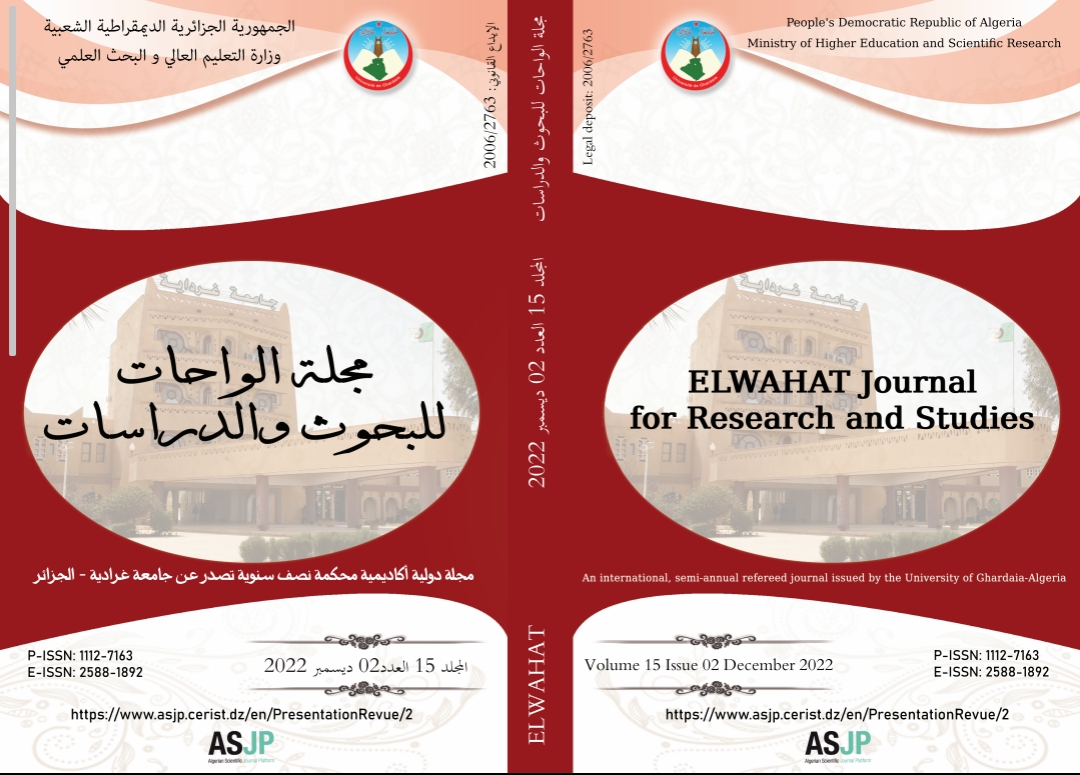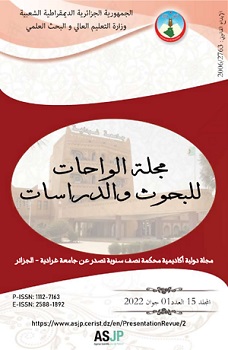Deciphering the Effective Relationship between Reading Fluency and Comprehension
الملخص
Abstract:
Reading is a complex process requiring from the reader to use his background knowledge, phonemic awareness and a letter to sound correspondence, and a meaning construction from the text. The consecutive performance of all those tasks results in reading fluency. After acknowledging fluency as a key component in an effective reading comprehension, exploring this area of research has gained scholars’ attention and interest. This paper aims at investigating the correlative relation that links fluency to comprehension. To achieve the study objectives and answer the research questions, 90 second year EFL learners at the ENS of Constantine were tested via Three Minute Reading Assessments test (3-MRA). Findings revealed a statistically significant positive correlation between students’ Correct Word per Minute and Comprehension scores. Though the degree of association between the variables was moderate; however, this cannot prevent us from concluding that improved fluency as signaled by automatic and accurate word recognition lead to improved comprehension.
Keywords: Automatic and accurate word recognition; comprehension; Correlative links; EFL students; Reading fluency
المراجع
Allinghton, R. L. (2006). Fluency: Still waiting after all these years. In Samuels, S. J & Farstrup, A.E (eds), What Research Has to Say about Fluency Instruction (94-105). International Reading Association.
Anderson, R. C., Wilkinson, A. G., & Mason, J. M. (1990). A micro analysis of the small group guided reading lesson: Effects on an emphasis on global story meaning. Centre of the Study of Reading, Technical Report, No.519, University of Illinois.
Bouguebs, R. (2017). The Effect of fluency oriented reading instruction on EFL students’ reading fluency and comprehension. Revue Science Humaines, A (47), 59-73.
Crosson, A. C., & Lesaux, K. L. (2010). Revisiting assumptions about the relationship of fluent reading to comprehension: Spanish speaker’s text reading fluency in English. Reading and Writing, 23, 475-494.
Deno, S. L. (2002). Progress monitoring: A study group, content module. http://www.progressmonitoring.net.
Fuchs, L. S., Fuchs, D., Hosp, M. K. & Jenkins, J. (2001). Oral reading fluency as an indicator of reading competence: Theoretical empirical and historical analysis. Scientific Studies of Reading, l5(3) ,239-256. Lawrence Erlbaum Associates.
Grabe, W. (2010). Fluency in reading: Thirty five years later. Reading in Foreign Language 22(1), 71-83.
Harris, T. L. & Hodges, R. E. (1995). The literacy dictionary: The vocabulary of reading and writing. The International Reading Association.
Klauda, S. L., & Guthrie, J. T. (2008). Relationships of three components of reading fluency to reading comprehension. Journal of Educational Psychology, 100(2), 310-321.
Kuhn, M. & Stahl, S. A. (2003). Fluency: A review of developmental and remedial practices. Journal of Educational Psychology, 95(1), 3-21.
Kuhn, M. R, Schwanenflugel, P. G., & Meisenger, E.B. (2010). Aligning theory and assessment of reading fluency: Automaticity, prosody and definitions of fluency. Reading Research Quarterly, 45(2), 230-251.
LaBerge, D., & Samuels, S. J. (1974). Toward a theory of automatic information process in reading. Cognitive Psychology, 6, 293-323.
Pardo, L.C. (2004). What every teacher needs to know about comprehension. International Reading Association, 272–280.
Pikulski, J. J., & Chard, D. J. (2005). Fluency: bridge between decoding and reading comprehension. The Reading Teacher, 58(6), 510-519.
Rasinski, T. (2004). Assessing reading fluency. Pacific Resources for Education and Learning.
Rasinski, T., & Padak, N. (2005). Three minutes reading assessment: Word recognition, fluency and comprehension. Scholastic Teaching Resources
Rasinski, T. (2006). A brief history of reading fluency. In Samuels, S. J, & A. E, Farstrup (eds), What Research Has to Say about Fluency Instruction (70-93). International Reading Association..
Rasinski.T., Rikli, A., & Johnston, S. (2009). Reading fluency: More than automaticity? more than a concern for the primary grades? Literacy Research and Instruction, 48, 350–361. Taylor & Francis Group
Samuels, S. J. (1979). How the mind works when reading: Describing elephants no one has ever seen. In Weaver, P. A. & Resnick L. B. (eds), The Theory and Practice of Early Reading ( pp. 343-368). Lawrence Erlbaum Associates.
Samuels, S. J. (1997). The method of repeated readings. The Reading Teacher, 50(5), 376-381.
Samuels, S. J. (2002). Reading fluency: Its development and assessment. In Samuels, S. J., & Farstrup, A. E. (eds), What Research Has to Say about Fluency Instruction 3rd edition (pp. 166-183). International Reading Association.
Samuels, S. J. (2006). Towards a model of reading fluency. In Samuels, S. J. & Farstrup, A. E. (eds), What Research Has to Say about Fluency Instruction, (24- 46). International Reading Association.
Tyler, B. J., & Chard, D. J. (2000). Using readers theater to foster fluency in struggling readers: A twist on the repeated reading strategy. Reading & Writing Quarterly, 16, 163-168.
Yovanoff, P. , Duesbery, L. , Alonzo, J., & Tinda, G. (2005). Grade-level invariance of a theoretical causal structure predicting reading comprehension with vocabulary and oral reading fluency. Educational Measurement: Issues and Practice






